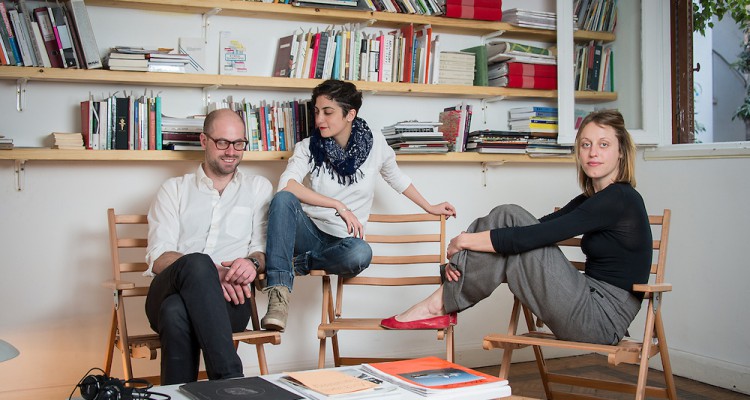
Think of the difference between a knife and a 20-dollar bill. Now, think of the difference between a knife and a 20-dollar bill. [i]
Institutional reality[ii] increases power, and by increasing institutional reality, we increase human capacity for action. John suggests that presupposing the institution of language (and economy) is precisely what holds us back from being able to think ourselves beyond the current condition. Before turning to the matter of institutional facts, he asks, “What is an institution?”
We too wonder, today, and tomorrow, what is an (art) institution? Why do institutions need to be bracketed by normative conceptions of what an institution really is, or has to be? Can institutions be indeterminate nowadays, or, in other words, perceptively ambiguous? How do institutions perform themselves, in relation to art works, artists, publics, places and questions? Can an institution learn from an artwork? Can it actually be an artwork? If we don’t presuppose institutions, what will the future of (art) institutions look like?
In The First Meeting we asked ourselves: what are our common intentions? Can a mission exclude a statement? When together, does this friendship create a promise? And is it true that a promise, like a secret, is always broken? We embraced each other through our names, through the first act of language. If institutions are women, are they only capable of love?[iii]
Jacques said “one responds first to the other: to the question, the request, the prayer, the apostrophe, the call, the greeting or the sign, the adieu of the other.” Answering-for-one-self is in itself for an-other. Doesn’t this structure our first understanding of the public? We court the public; but the public is not a court. We do not answer before the law, before the question. The order of things is significant. Think of this sentence: “It seems intuitively right to say that you can have language without money, but not money without language.”
There’s a beautiful passage in the essay on the Politics of Friendship where we speak about responsibility, irresponsibility of speaking, of quoting or, citing, of port – support – rapport.
Answer me!
Anri doesn’t trust language. Do you remember the scene in which a woman attempts to end a relationship and the man continuously – and violently – drums on to silence her? …Somewhere beneath a listening station on the top of the hill that was monitoring the Soviets, in Devil’s mountain: the frequency, the reverberation, the structure, the architecture…the frustration. Answer me! And the drama that comes under the influence of a building… Antonioni wanted to shoot the silences in a couple’s break-up. The silence is unbearable.
The institution speaks. “Let me take you to a place of ethics and response…” she says. “The very possibility of the question, in the form of ‘what is…?’ seems always to have supposed this friendship prior to friendships, an affirmation, before time, of being together.”
You will grant me the following: before taking the responsibility up in our own name, to each one of us, this affirmation, in an asymmetrical curvature of social space, in relation to each other comes prior to any determined ‘government,’ to any law – in the sense of Kafka’s “before the law.”
What is the question?
If it is vessel, can we sit in it? If it is a megaphone, can we speak from it? If it is a crop, can it change the field of our practice? If it is a pair of scissors, can it re-fashion and re-shape institutional codes? Does its location change how we respond to it? If it is a 20-dollar bill, does it change the language of funding? If it is a waitress, does it serve artistic practice? If it is a communication tower, what does it transmit? If it is a court of law, does it promise justice to a future? If it is time, does it make space? Geologically speaking, does the question acknowledge “shifting” as we go forward? If it is a school, what are the essential lessons of disobedience, of skipping classes? As a book, what are its references? If it is sourdough, at which degree do we bake knowledge? In a swimming pool, can we imagine a horizon past chlorinated water?
We have begun to respond. We are already caught; we are already surprised, in a certain responsibility, and the most ineluctable of responsibilities – as if it were possible to think of a responsibility without freedom […] to assume this responsibility in the space of what could be called autonomy.
This text is freely quoting from John Searle, Jacques Derrida, a work by Anri Sala, The Politics Of Friendship, What Is an Institution, other sources, our friends and each other.
Beirut is an art initiative and exhibition space that considers institution building as a curatorial act. Our work involves conceiving three Seasons of exhibitions, events and programs every year, hosting artists, initiating projects and working with other institutions (locally, regionally, internationally). We make space to contemplate contemporary life from the position of art, and provide a place to work and respond (from). At Beirut, we believe change first needs to be imagined in order to be achieved. Beirut is collectively run by Jens Maier-Rothe, Sarah Rifky, Antonia Alampi, assisted by Habiba Effat.